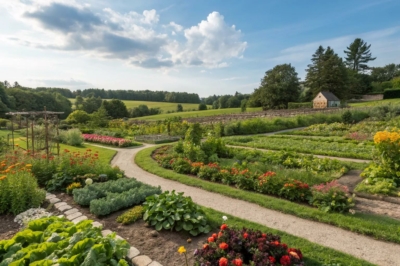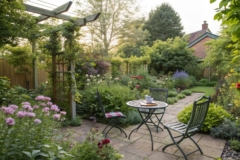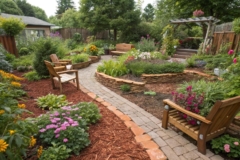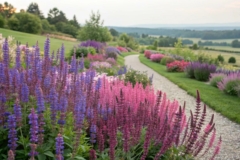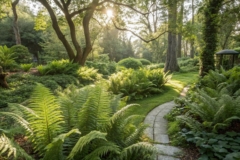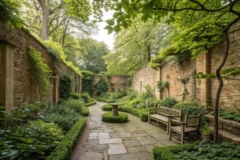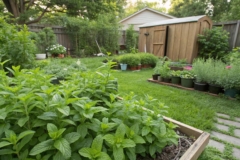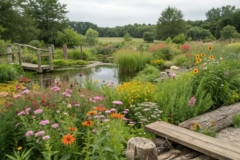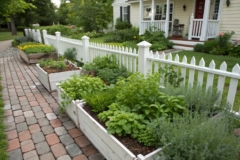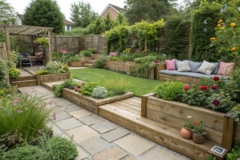1. Potager Gardens for Year-Round Harvests
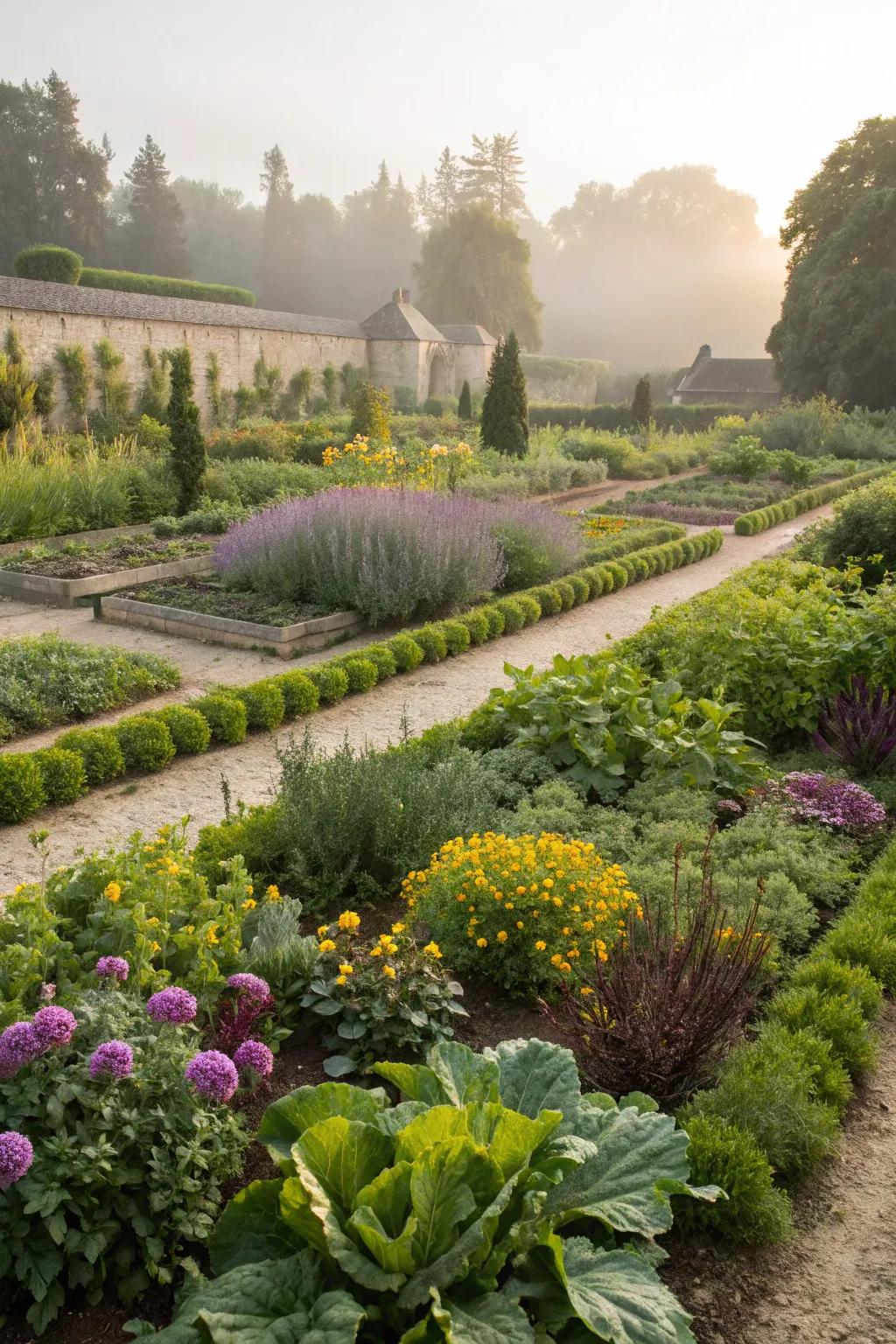
Create a potager garden for a charming mix of vegetables, herbs, and flowers. This style keeps my garden productive and visually appealing throughout the seasons.
Try these:
- Raised Garden Bed Kit: Enhance your garden layout with this easy-to-assemble raised bed for vegetables and flowers.
- Organic Vegetable Seed Pack: Start your potager garden with a selection of organic seeds for diverse, fresh produce.
- Garden Border Edging: Define and beautify your garden paths with sturdy, decorative garden border edging.
2. Aromatic Herb Spiral for a Sensory Experience
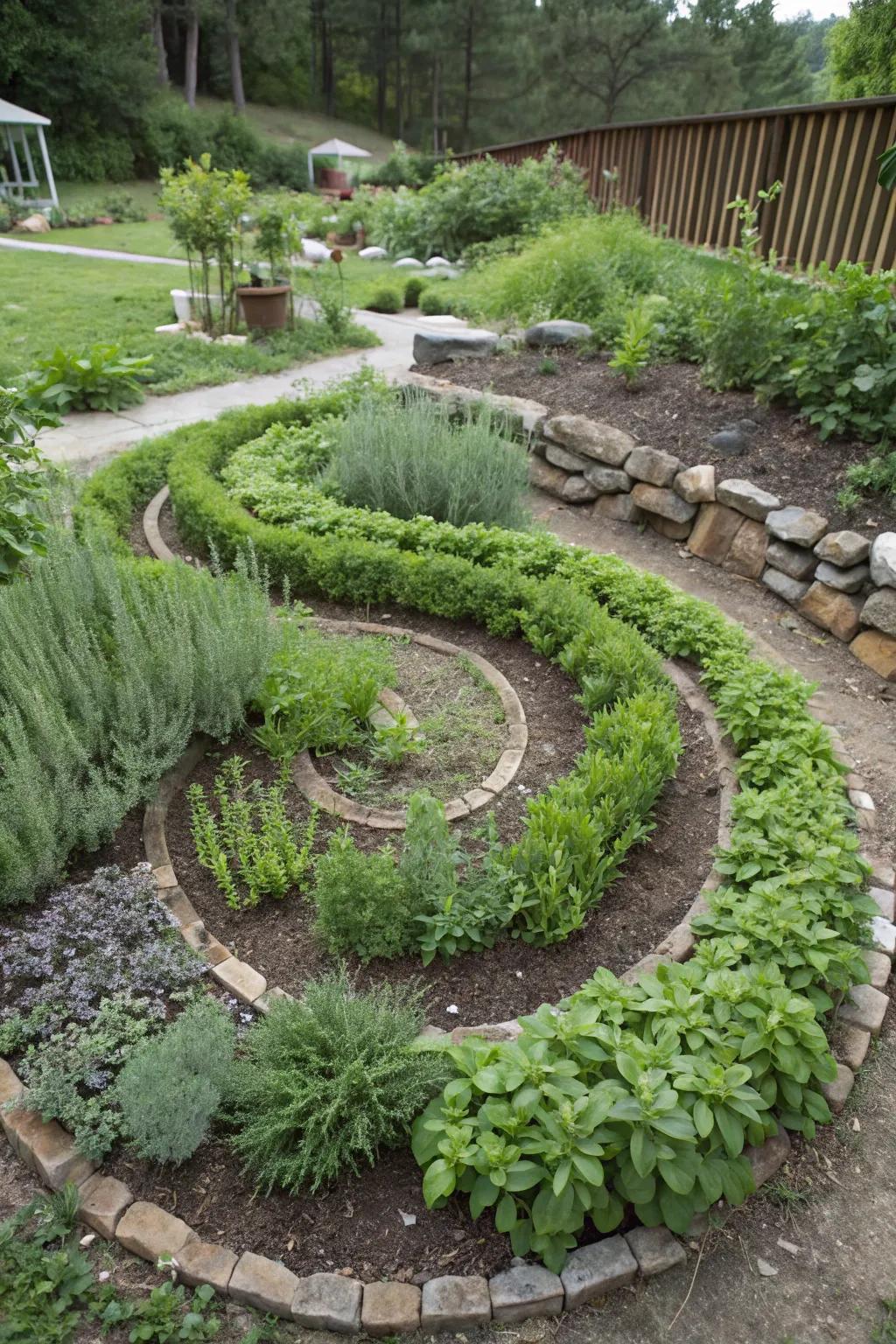
Build an herb spiral for a unique, aromatic addition to your garden. Mine is a fragrant centerpiece, with basil, thyme, and rosemary cascading down in a spiral.
You might give these a try:
- Herb Spiral Kit: Create a stunning herb spiral effortlessly with this easy-to-assemble kit.
- Organic Basil, Thyme, and Rosemary Seeds: Grow fresh, aromatic herbs in your garden with these organic seed packets.
- Garden Soil for Herbs: Nurture your herb spiral with rich, nutrient-dense soil designed for healthy plant growth.
3. Natural Aesthetic with a Flourishing Design
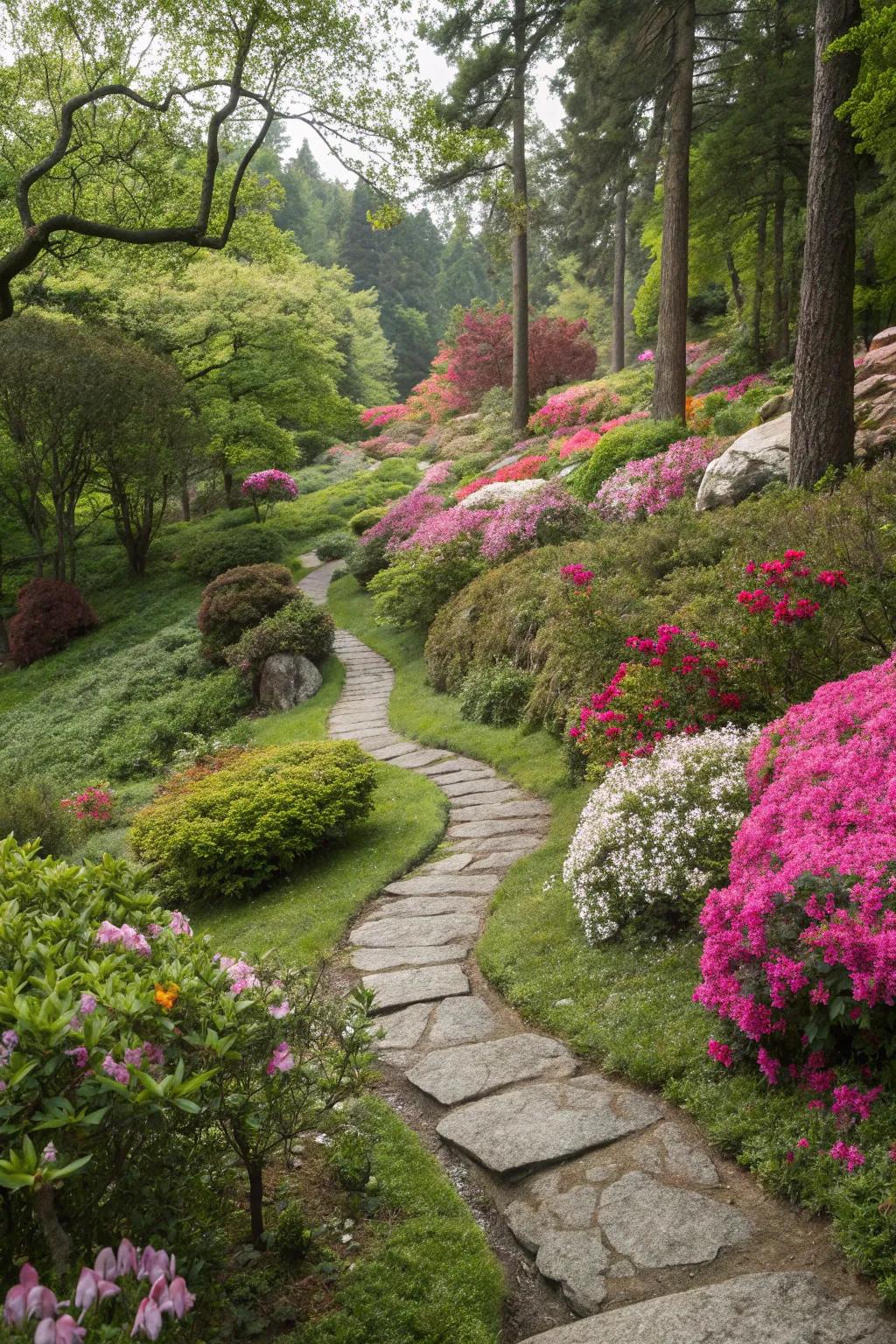
Embrace a natural aesthetic by letting plants grow in harmonious, flowing designs. My garden feels like a lush retreat, with pathways meandering through blooming flowers.
Might be a good match:
- Stone Garden Pathway Kits: Transform your outdoor space with natural stone pathway kits enhancing your garden’s elegance.
- Garden Perennial Flower Mix: Create a lush retreat with a mix of perennial flowers that bloom year after year.
- Outdoor Solar Garden Lights: Illuminate your pathways with solar garden lights for a magical evening ambiance.
4. Structured Layouts for a Polished Look
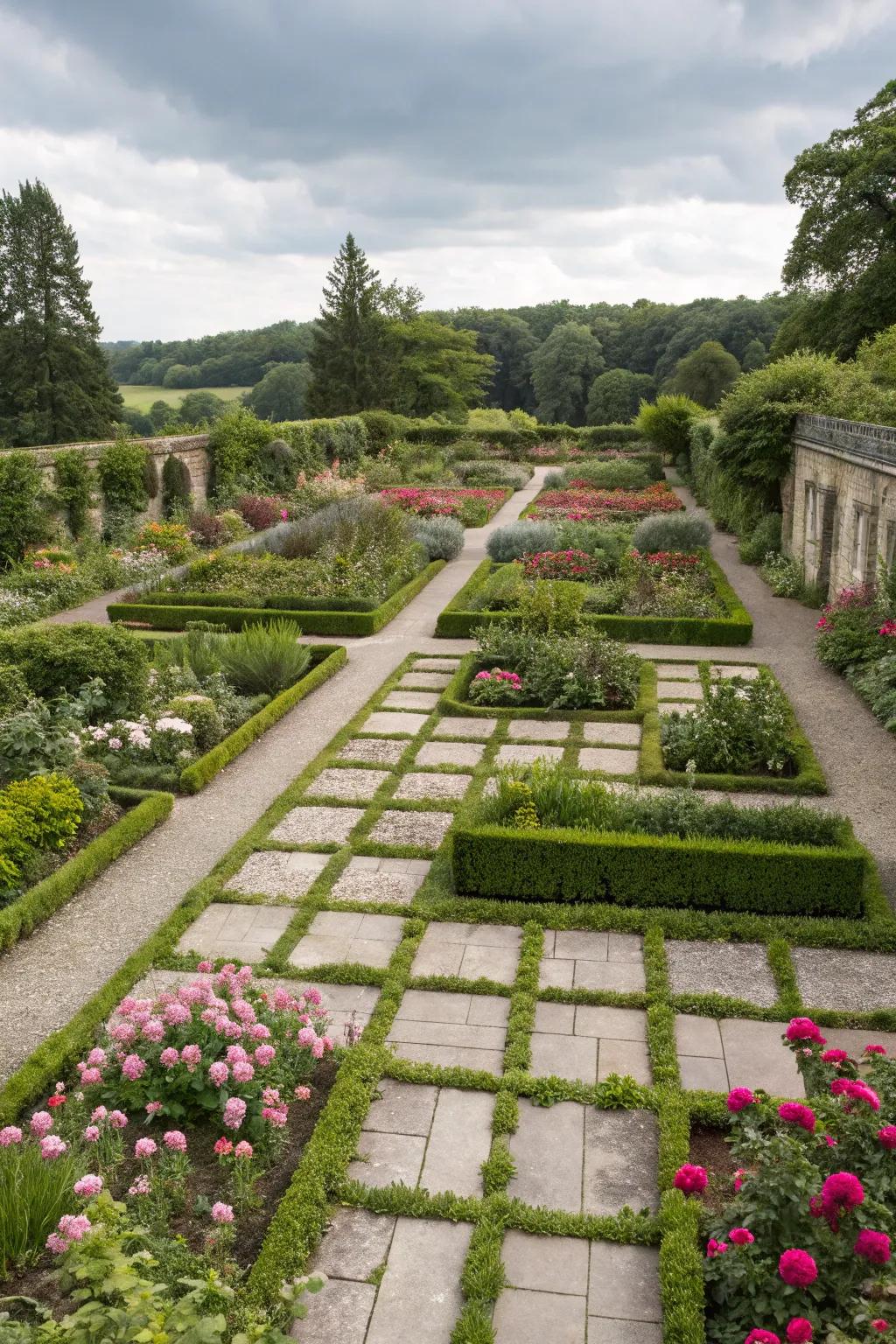
Creating structured layouts in your garden can make even the wildest spaces look tidy and intentional. I love using geometric designs to define garden beds and paths in my backyard.
These products might be useful:
- Garden Edging Kit: Enhance your garden’s structure with easy-to-install edging for a clean, defined look.
- Geometric Paving Stones: Transform pathways with stylish geometric paving stones and elevate your garden’s design.
- Boxwood Shrubs: Create neat, green hedges with boxwood shrubs for a classic, polished garden layout.
5. Raised Beds for Easy Maintenance
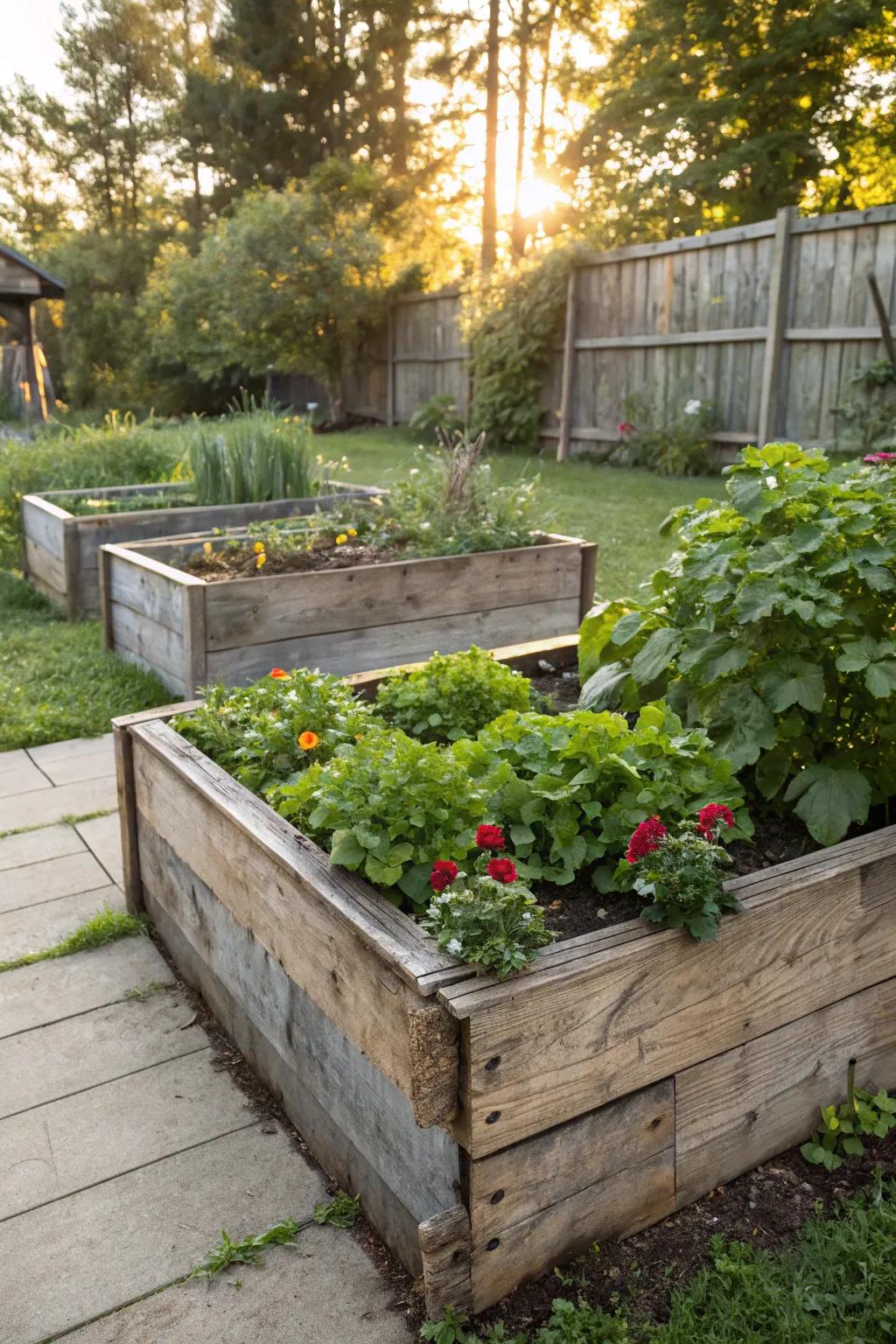
Raised garden beds are perfect for better soil control and accessibility. I built mine with reclaimed wood, adding a rustic touch while making gardening easier on my back.
Explore these options:
- Reclaimed Wood Garden Bed Kits: Build an eco-friendly garden with ease using these stylish reclaimed wood bed kits today.
- Soil Mix for Raised Beds: Ensure optimal growth by filling your raised beds with nutrient-rich soil mix, try it now.
- Gardening Knee Pads: Protect your knees while you tend to your garden with these comfortable, durable knee pads.
6. Creating Inviting Pathways
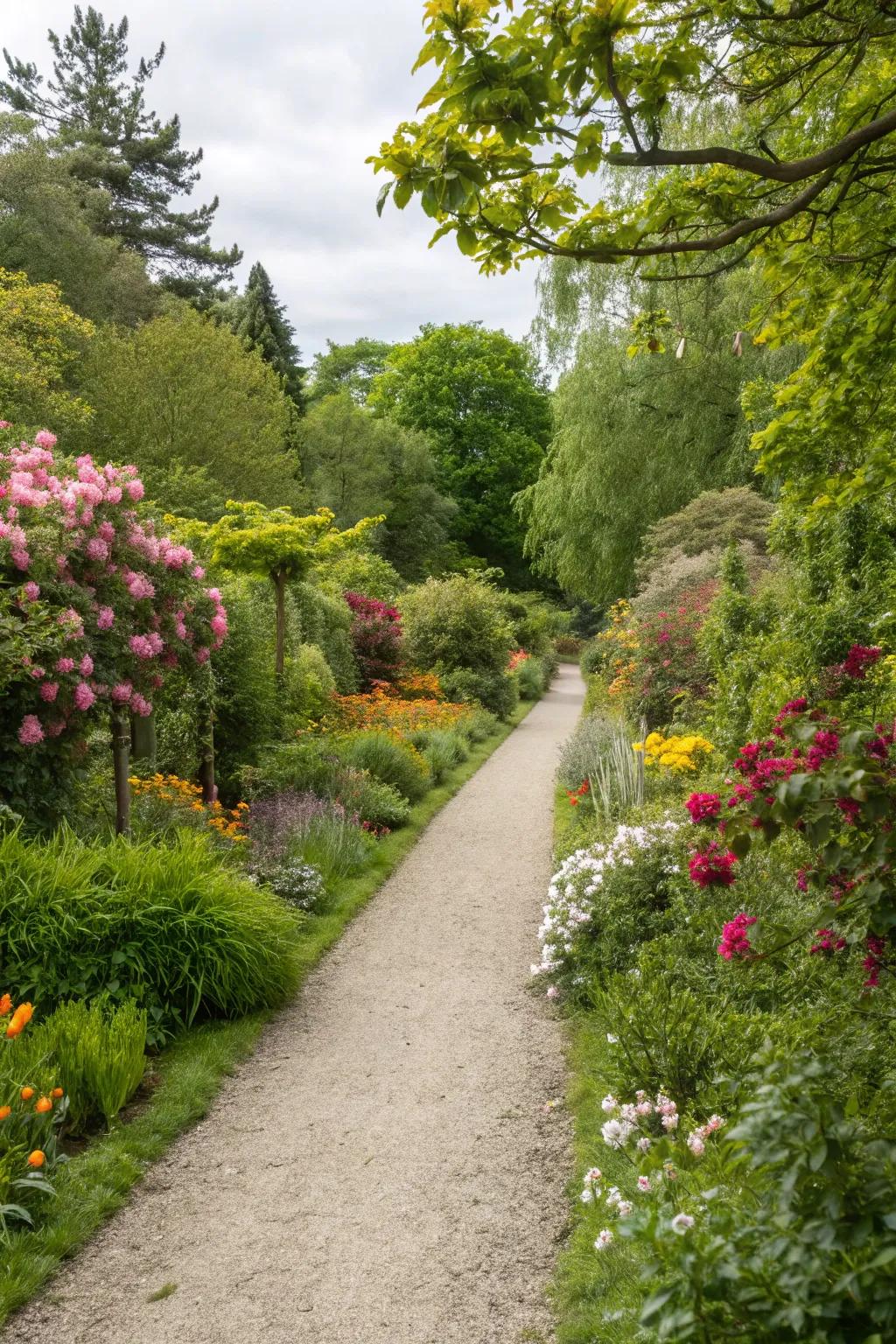
Using brick, gravel, or stone pathways can elegantly guide visitors through your garden. In my garden, a winding gravel path ties everything together beautifully.
Items that may come in handy:
- Decorative Garden Pathway Gravel: Enhance your garden with decorative gravel, creating charming pathways that invite exploration.
- Interlocking Brick Pavers: Add elegance to your garden paths with durable interlocking brick pavers for a classic look.
- Natural Stone Stepping Stones: Create a rustic garden path using natural stone stepping stones, blending beauty with functionality.
7. Edible Landscaping for Dual Purpose
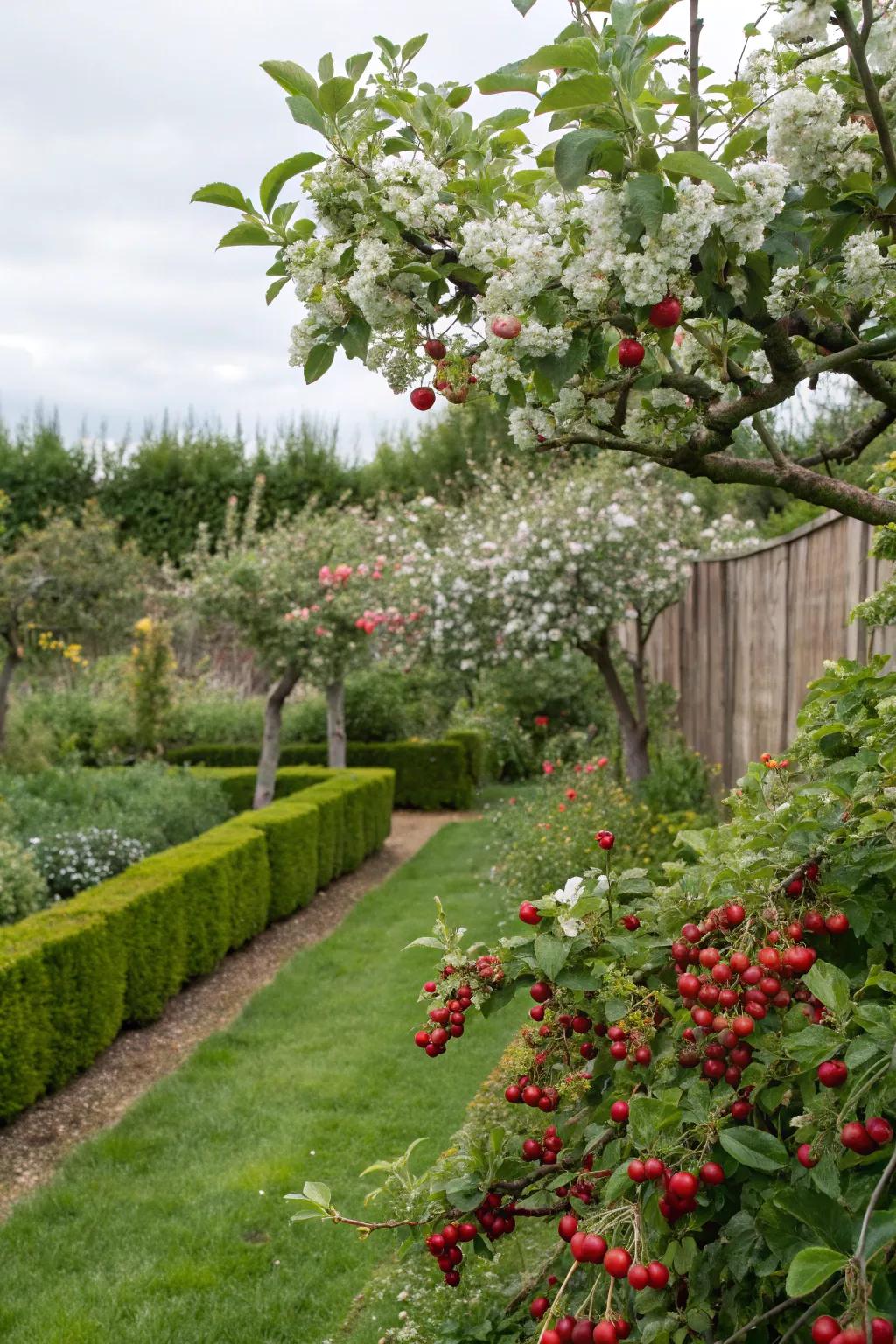
Incorporate edible landscaping by using fruit trees and berry bushes as decorative elements. My apple trees provide shade and delicious harvests every fall.
You might like:
- Dwarf Fruit Tree Planter Set: Enhance your garden’s charm with decorative dwarf fruit trees for shade and tasty harvests.
- Berry Bush Starter Kit: Grow vibrant berry bushes that offer beautiful blossoms and delicious fruit for your landscape.
- Organic Garden Soil Mix: Boost your edible landscape’s growth with nutrient-rich, organic soil for healthier plants.
8. Diverse Plant Selection for a Vibrant Ecosystem
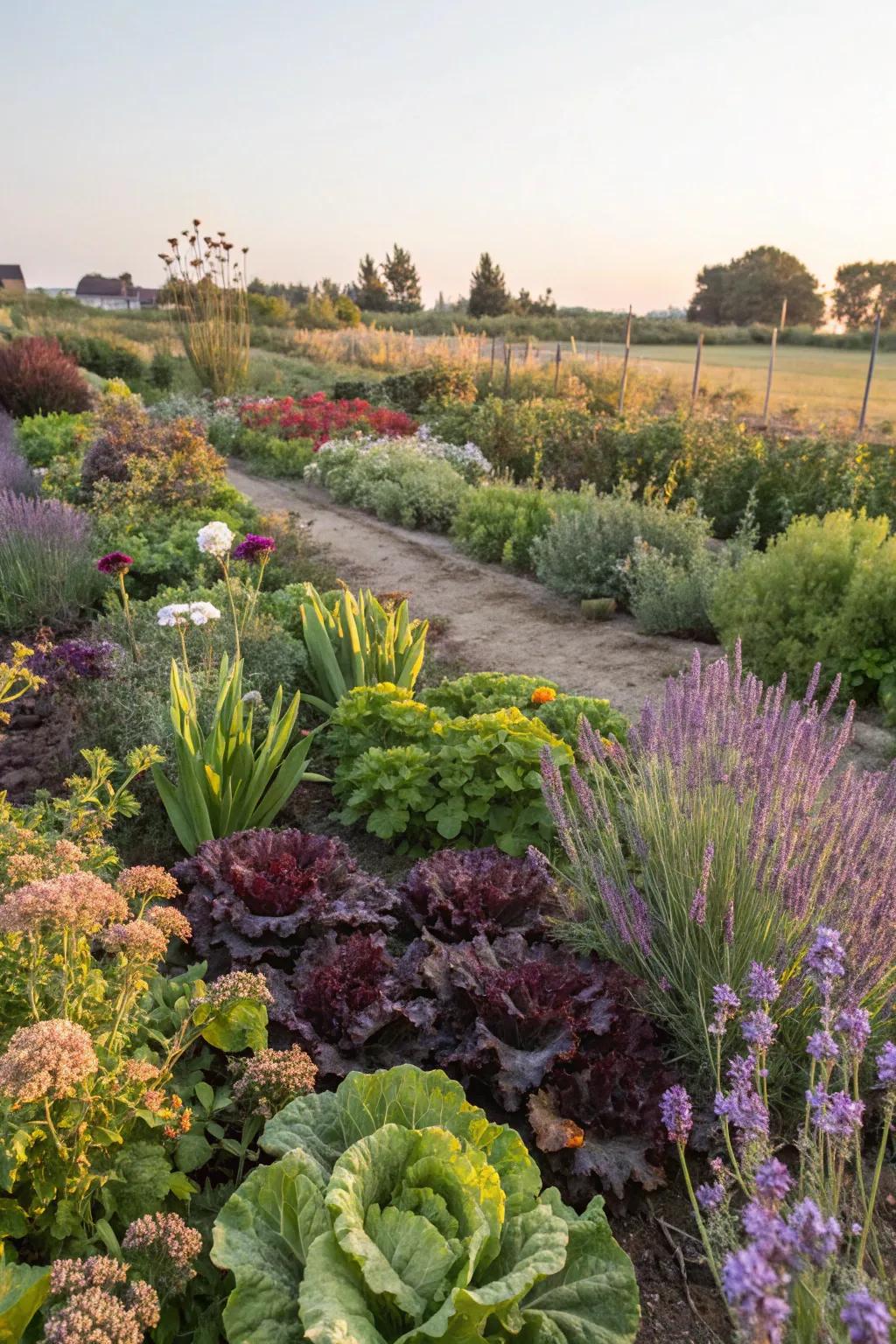
Incorporating a diverse plant selection can create a vibrant and resilient ecosystem. My garden is a lively patchwork of colors and textures, from lettuce to lavender.
Products that could assist:
- Organic Vegetable Seed Variety Pack: Grow a colorful vegetable garden with this seed variety pack. Perfect for diverse planting!
- Perennial Flower Seed Collection: Enhance your garden with this perennial flower seed collection for year-round beauty and color.
- Herb Seed Kit with Garden Markers: Cultivate a fragrant herb garden. Includes seeds and markers for easy identification and care.
9. Square-Foot Gardening for Abundant Harvests
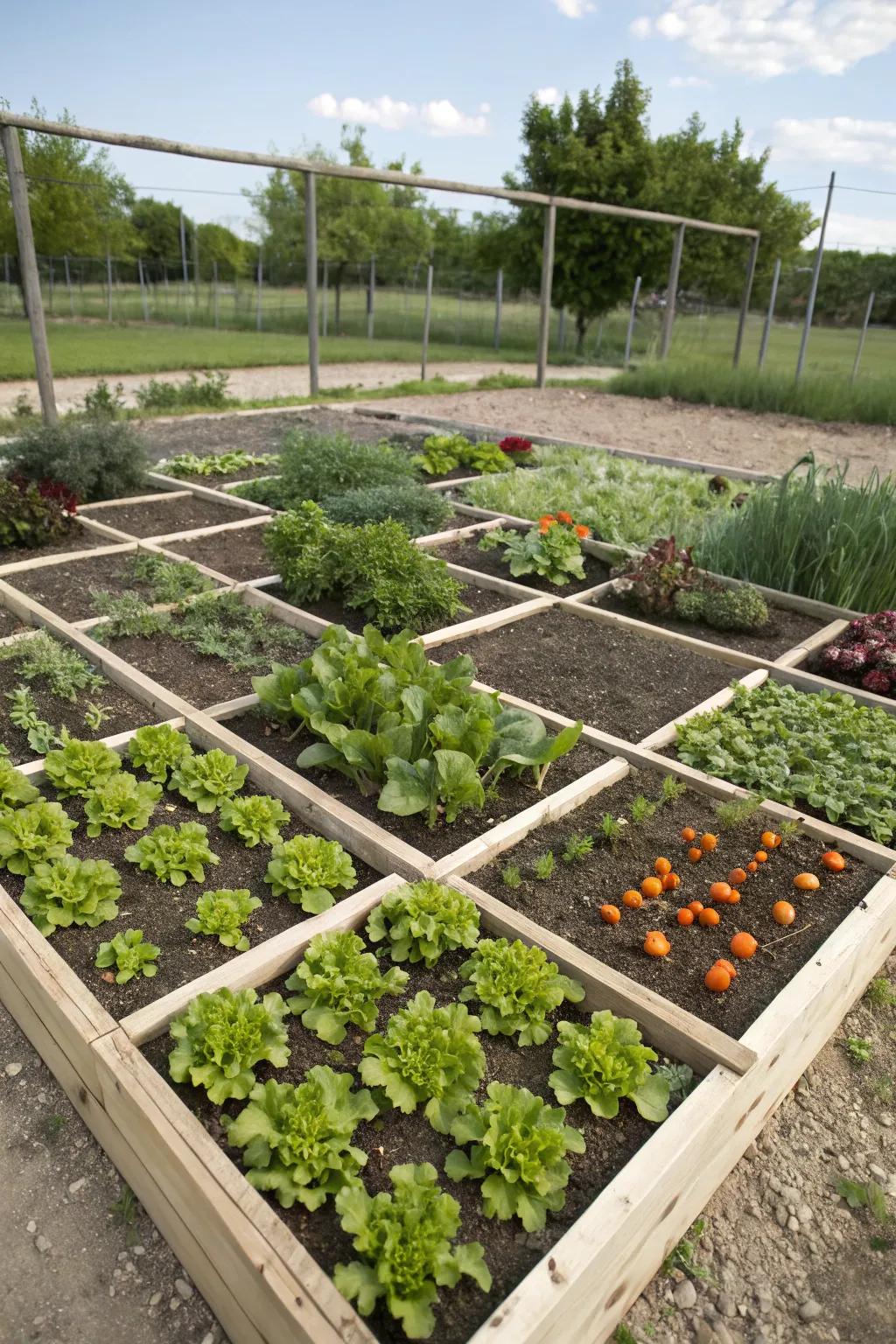
Try square-foot gardening to efficiently use space and boost yields. I love how this method keeps my small garden productive and easy to manage.
Check if these fit your needs:
- Raised Garden Bed Kit: Maximize your garden space with a durable raised bed kit for efficient planting.
- High-Quality Garden Soil: Boost plant growth with nutrient-rich garden soil designed for optimal drainage and aeration.
- Adjustable Garden Grid: Organize your square-foot garden easily with a flexible and reusable garden grid layout.
10. Maximizing Space with Vertical Gardening
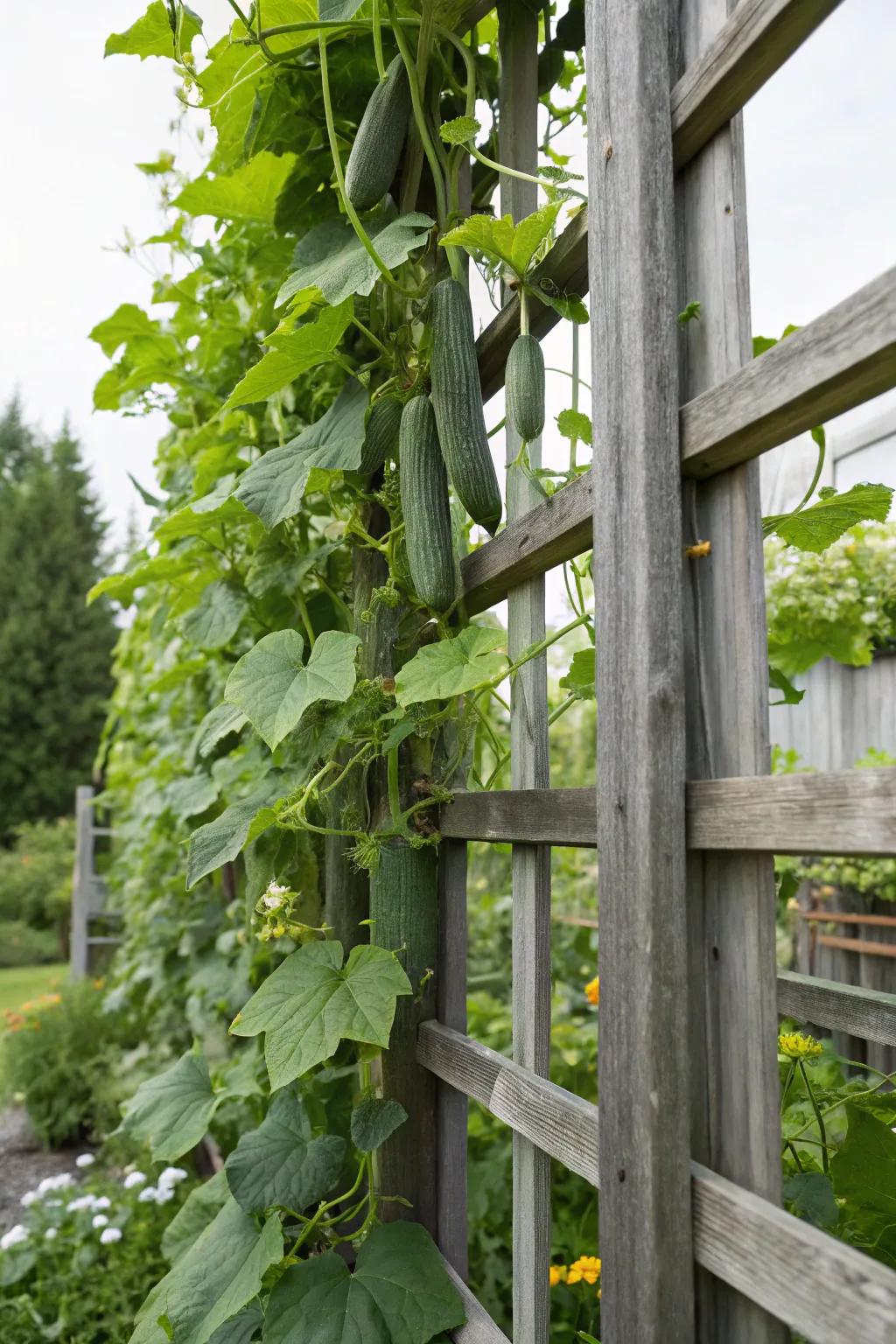
Utilize vertical space with trellises or grids to grow more in less area. I love watching my cucumbers climb up their trellis, freeing up ground space for other plants.
Consider these options:
- Expandable Garden Trellis: Transform your garden with an expandable trellis to elevate plants and save space effectively.
- Heavy-Duty Plant Support Grid: Enhance your vertical gardening with a strong grid for perfect plant growth and space efficiency.
- Vertical Garden Planters: Optimize your garden space by using vertical planters for a tidy and vibrant garden display.
11. Shade Gardens for Dimly Lit Spaces
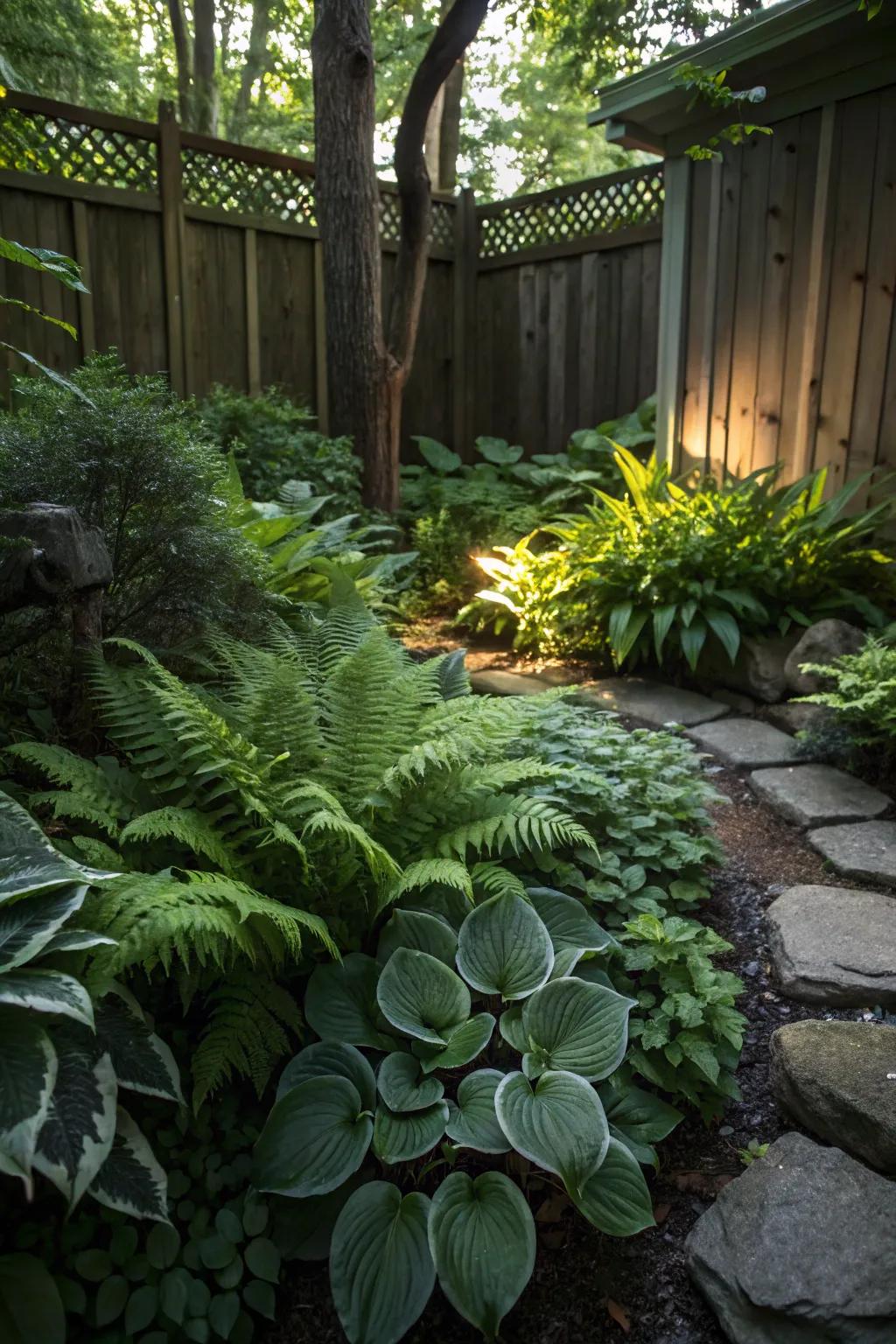
Design a shade garden with plants like ferns and hostas to brighten dim areas. My shaded corner is a lush refuge in the heat of summer.
Check these products out:
- Shade-Tolerant Fern Mixed Seeds: Enhance your shaded garden with easy-to-grow fern seeds, perfect for brightening dim corners.
- Decorative Garden Stepping Stones: Add charm and function with elegant stepping stones, ideal for creating a garden path.
- Outdoor LED Landscape Spotlights: Illuminate your garden’s beauty with energy-efficient spotlights, enhancing your serene shade refuge.
12. Companion Planting for Healthier Gardens
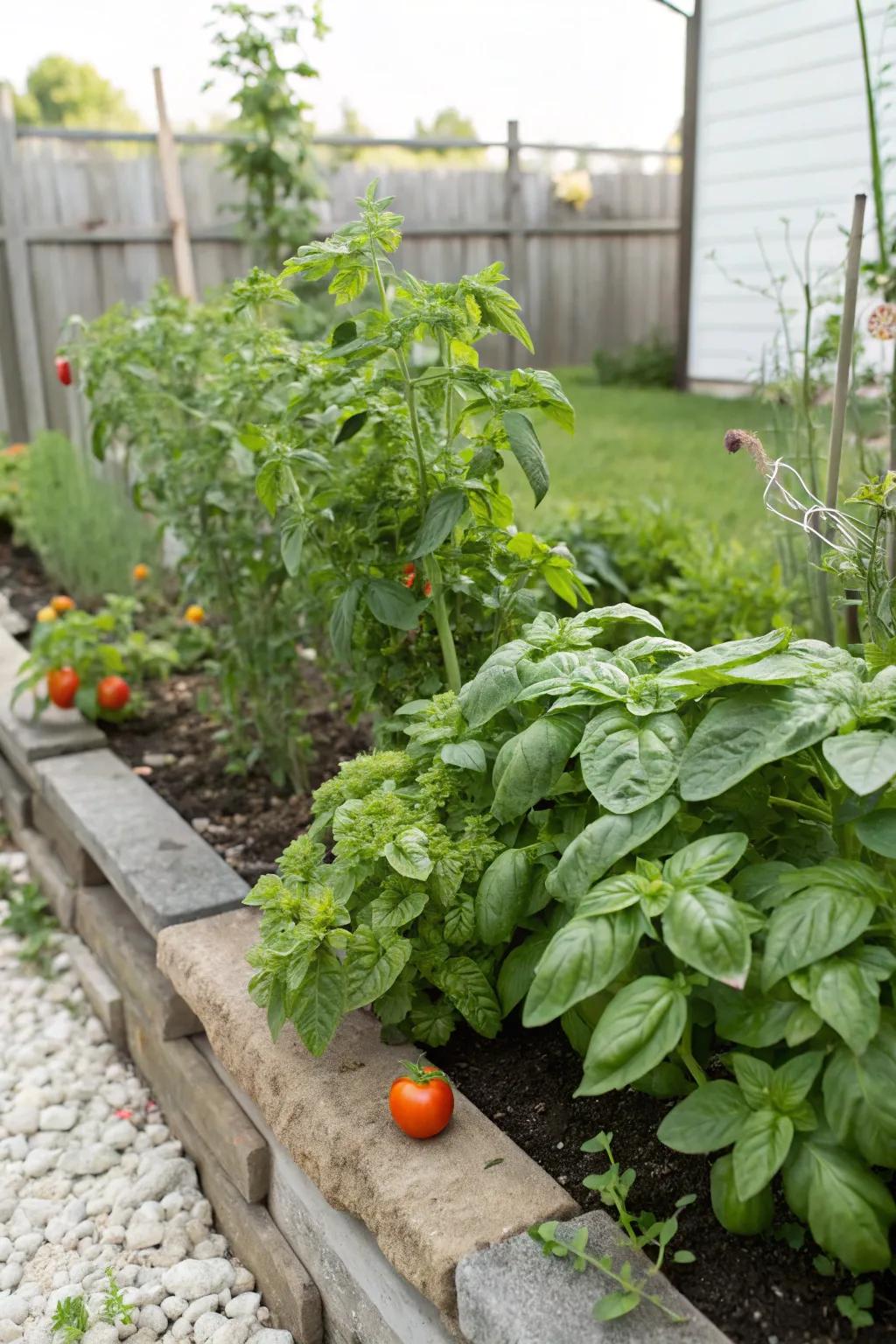
Companion planting can boost plant health and yields by pairing beneficial plants together. My favorite duo is basil and tomatoes; they thrive together in my sunny corner.
A few suggestions:
- Organic Herb Seed Kit: Enhance your garden with a variety of organic herbs. Perfect for companion planting success.
- Raised Garden Bed: Create the ideal environment for companion planting with a sturdy raised garden bed.
- Garden Soil Mix: Boost plant health with a nutrient-rich soil mix for thriving companion plants.
13. DIY Garden Art for Personal Touch
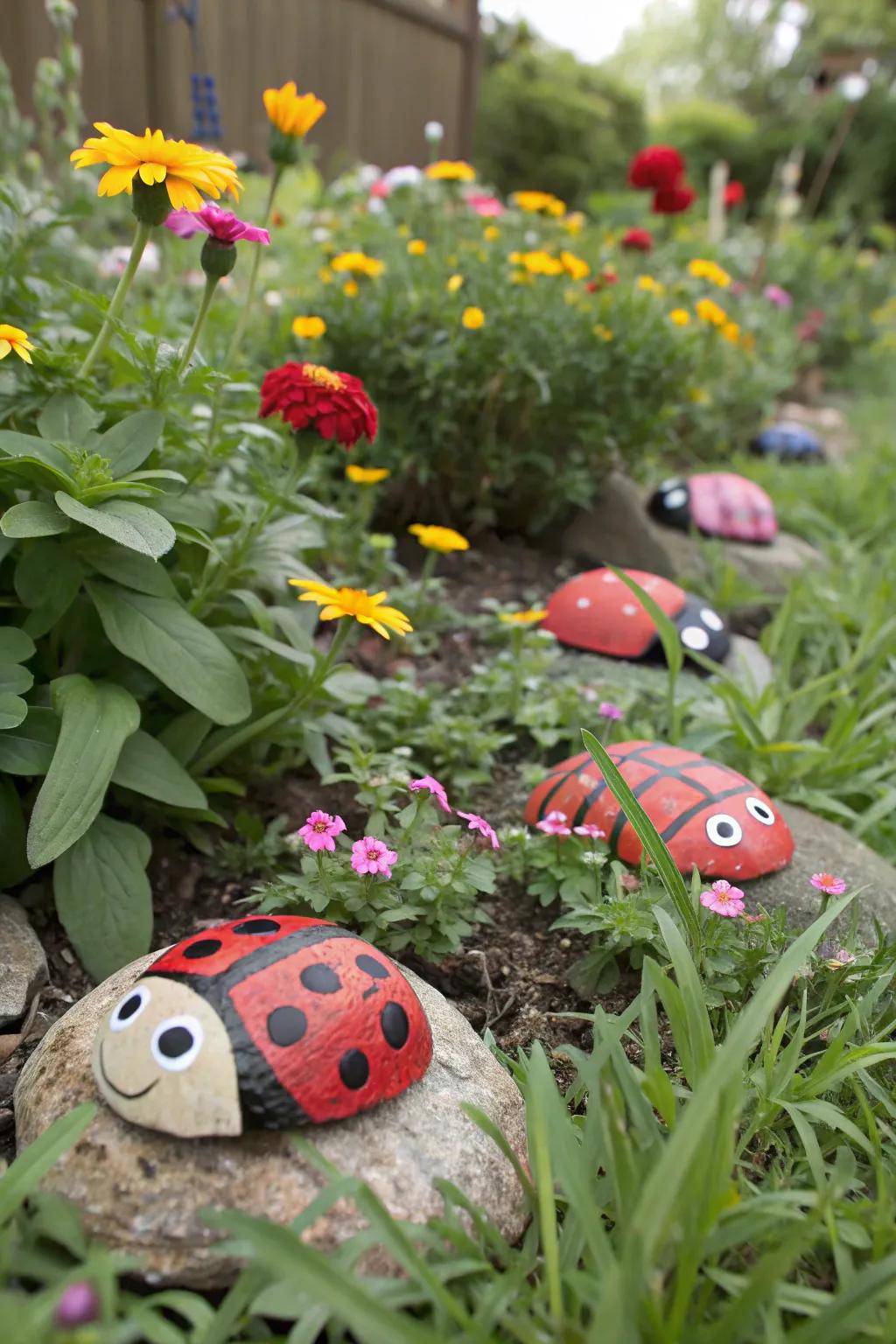
Add DIY garden art like painted stones or homemade sculptures for a personal touch. My garden is dotted with colorful stone ladybugs, adding whimsy and charm.
Give these a look:
- Acrylic Paint Set for Outdoor Use: Unleash your creativity with vibrant acrylics, perfect for painting garden stones and sculptures.
- Smooth River Rocks for Crafting: Get started with crafting by choosing these smooth rocks ideal for painting charming designs.
- DIY Sculpture Mold Kit: Design unique sculptures with an easy-to-use mold kit to enhance garden aesthetics.
14. Efficient Space Use for Small Gardens
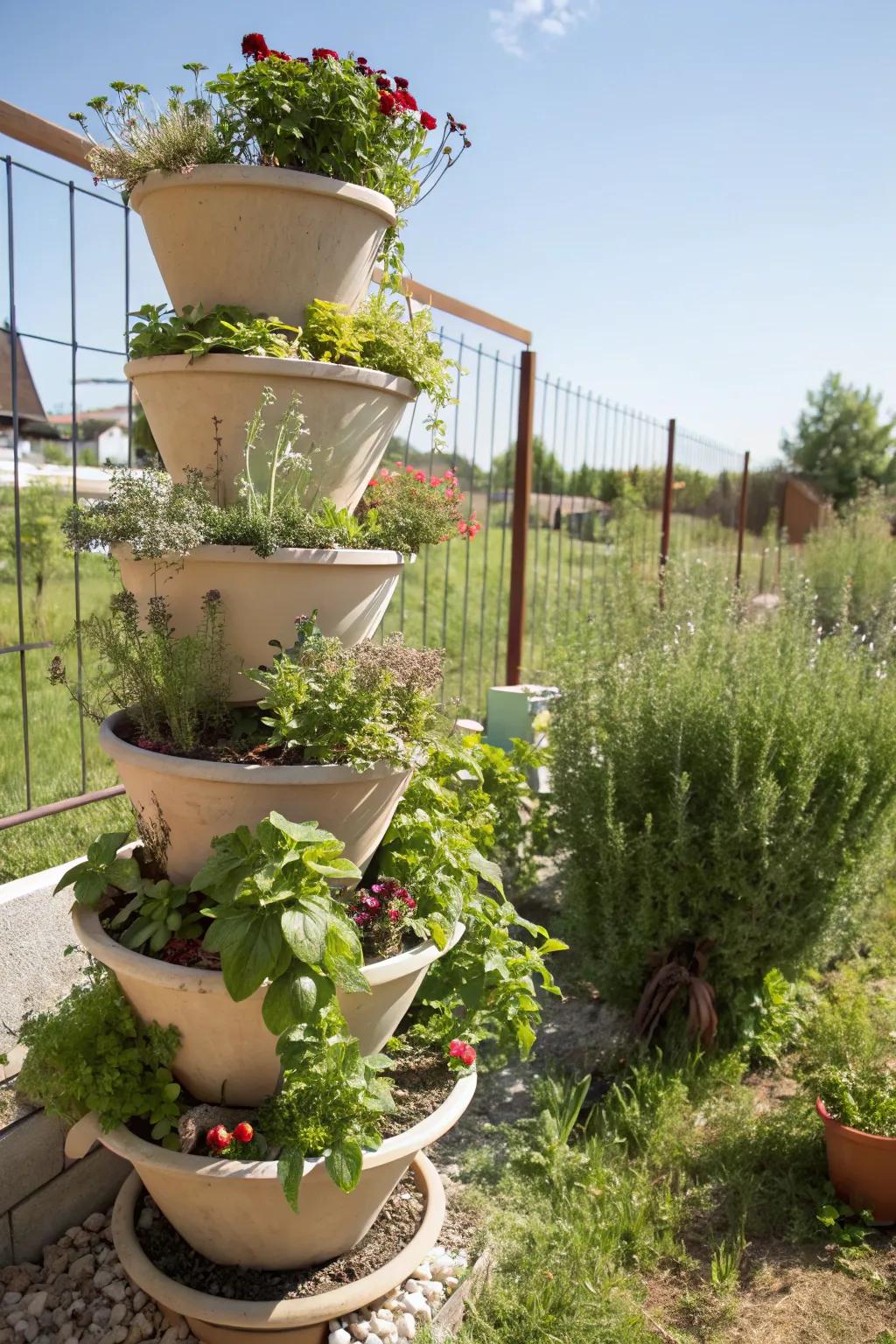
Make every inch count with efficient space use techniques in small gardens. I stack pots and use tiered planters to pack more plants into my cozy patio.
Maybe worth checking out:
- Tiered Planter Stand: Maximize vertical space with this tiered planter stand, perfect for small patios or balconies.
- Stackable Flower Pots: Utilize stackable flower pots to efficiently add more plants without needing extra ground space.
- Vertical Garden Tower: Create lush greenery with a vertical garden tower, ideal for compact garden spaces.
15. Colorful Container Gardens for Flexibility
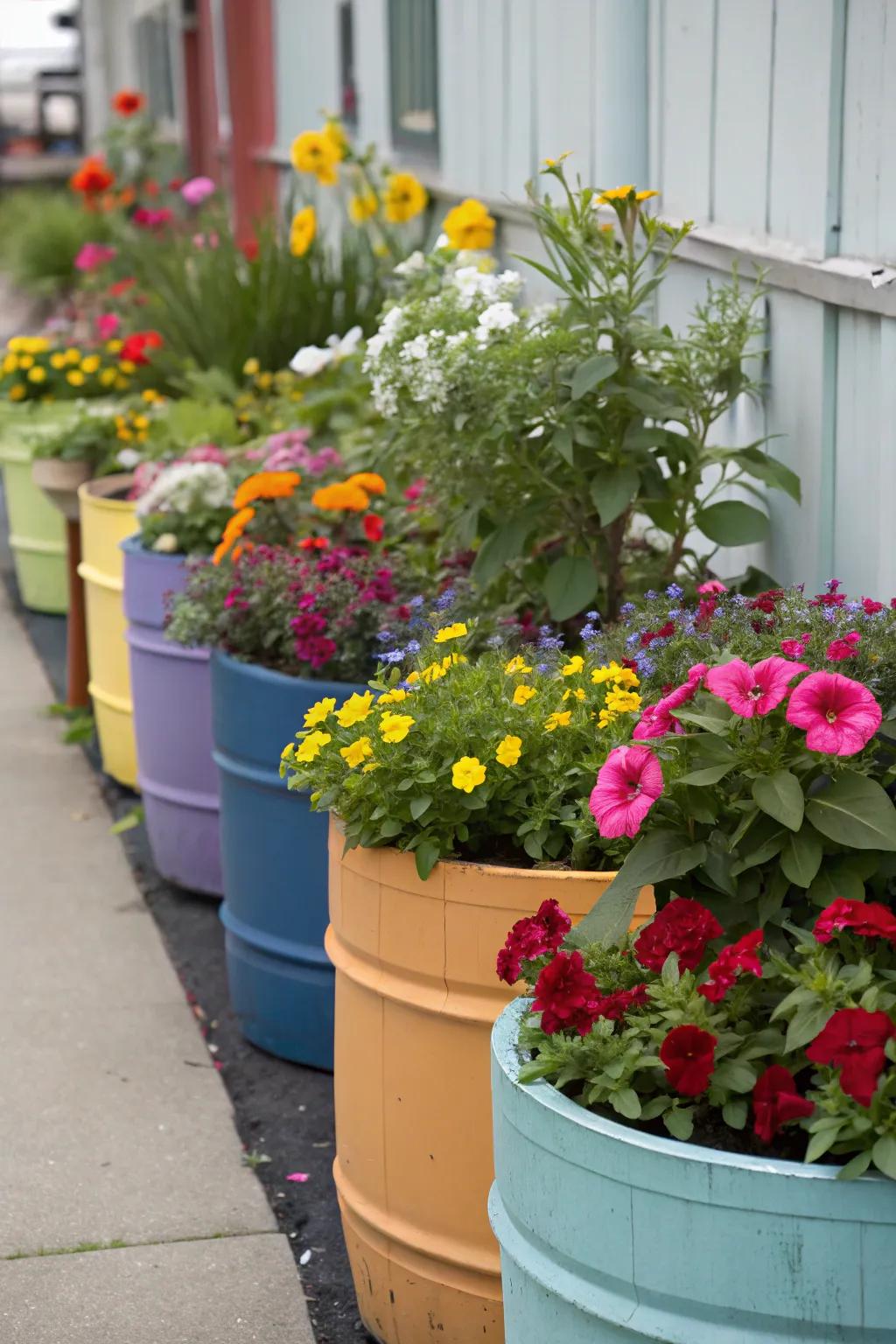
Use colorful container gardens to add flexibility and bursts of color. I love arranging my potted plants in clusters for a vibrant and movable display.
A few choices to try:
- Vibrant Outdoor Plant Pots: Brighten your garden with these colorful pots, perfect for movable and eye-catching arrangements.
- Portable Plant Caddies with Wheels: Easily move your garden clusters with convenient plant caddies, ensuring flexible design setups.
- Multipurpose Gardening Gloves: Keep your hands protected while arranging vibrant container gardens with durable gardening gloves.
16. Moon Gardens for Nighttime Beauty
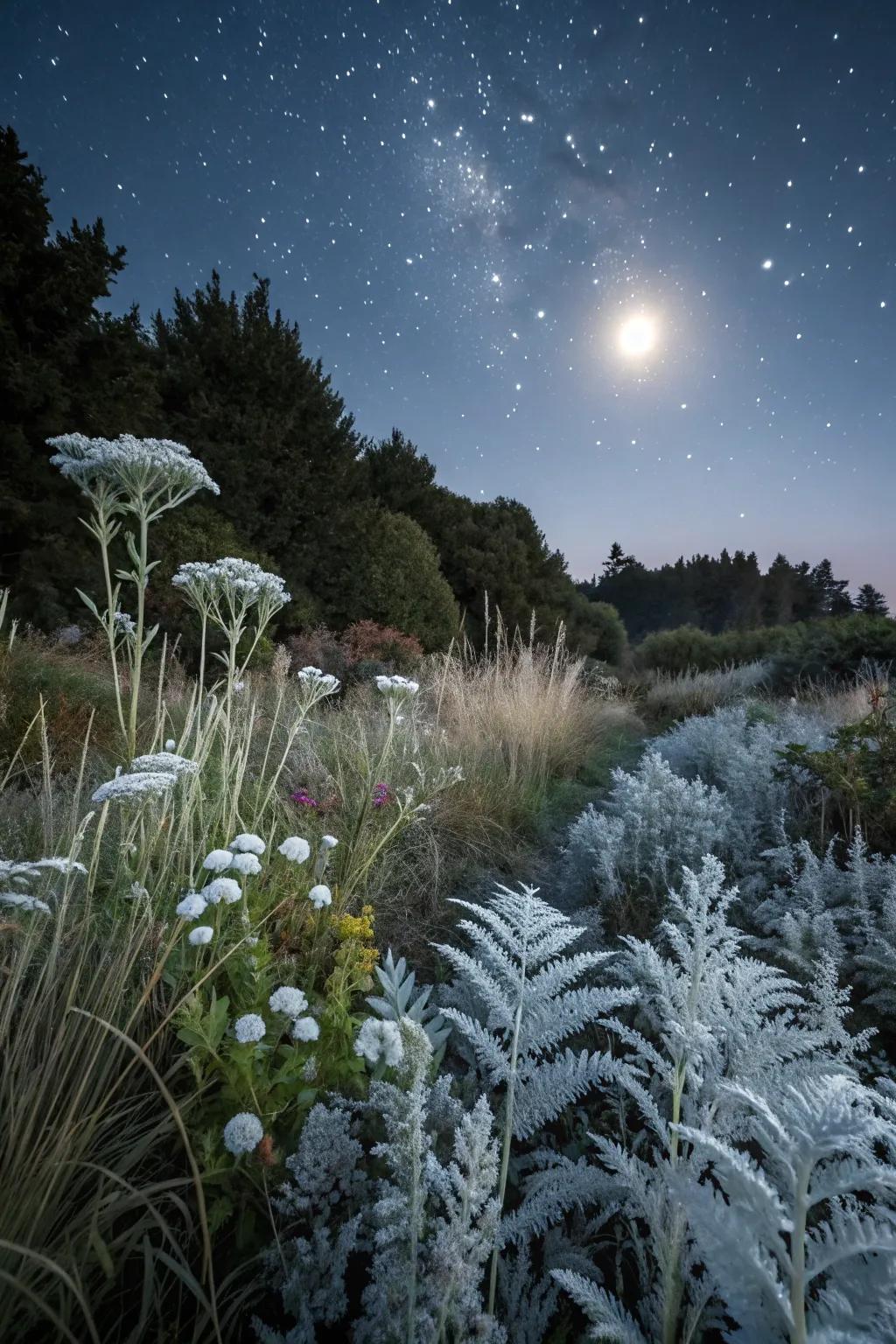
Design a moon garden with white and silver plants to glow under moonlight. My evening strolls are magical, with plants like jasmine and lamb’s ear shimmering softly.
A few helpful options:
- White Jasmine Plants: Enhance your moon garden with fragrant jasmine, creating a magical evening stroll.
- Lamb’s Ear Plants: Add soft, silver-hued lamb’s ear for a shimmering effect under moonlight.
- Garden Solar Lights: Illuminate your moon garden subtly with solar lights for an enchanting night ambiance.
17. Mixing Vegetables and Flowers
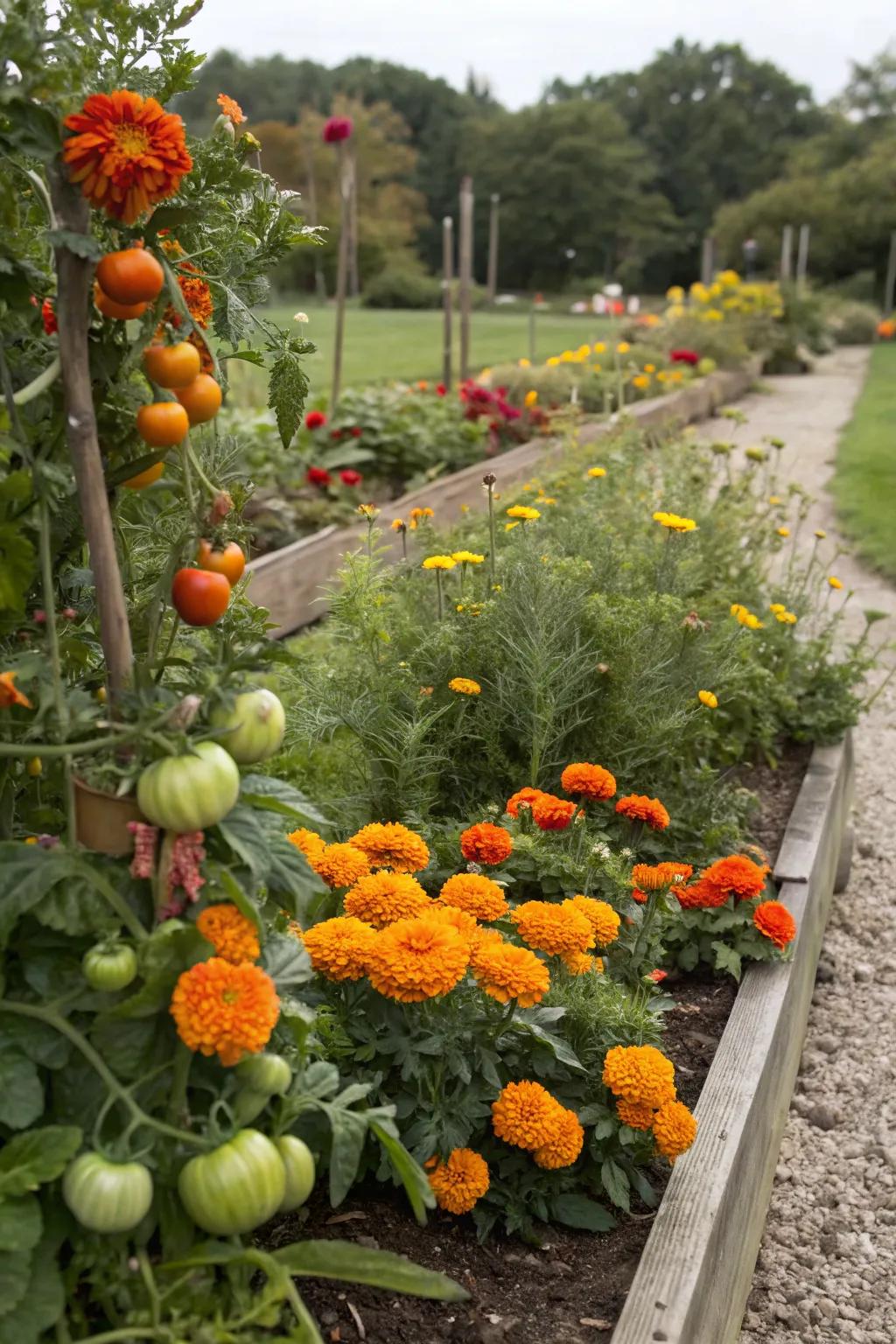
Why not combine beauty with utility by integrating vegetables with ornamental flowers? I often tuck marigolds between my tomato plants for a splash of color and natural pest control.
Some handy options:
- Organic Vegetable and Flower Seeds Pack: Start your vibrant garden with these organic seeds, perfect for combining veggies and blooms.
- Garden Trellis for Climbing Plants: Support your tomatoes and marigolds with a stylish trellis, adding structure and beauty.
- Natural Pest Control Marigold Companion Plants: Enhance your garden’s health with marigolds that naturally deter pests and add color.
18. Pallet Gardens for Upcycled Charm

Use upcycled pallet gardens to add vertical greenery and rustic charm. My pallets are filled with cascading strawberries, adding a sweet touch to my backyard.
May just do the trick:
- Vertical Garden Planter Liners: Protect your plants with durable liners for easy drainage and maintenance in your pallet garden.
- Organic Strawberry Plant Fertilizer: Boost strawberry growth naturally with eco-friendly fertilizer, perfect for lush pallet gardens.
- Heavy-Duty Garden Gloves: Keep your hands safe while working on pallets with durable, protective garden gloves.
